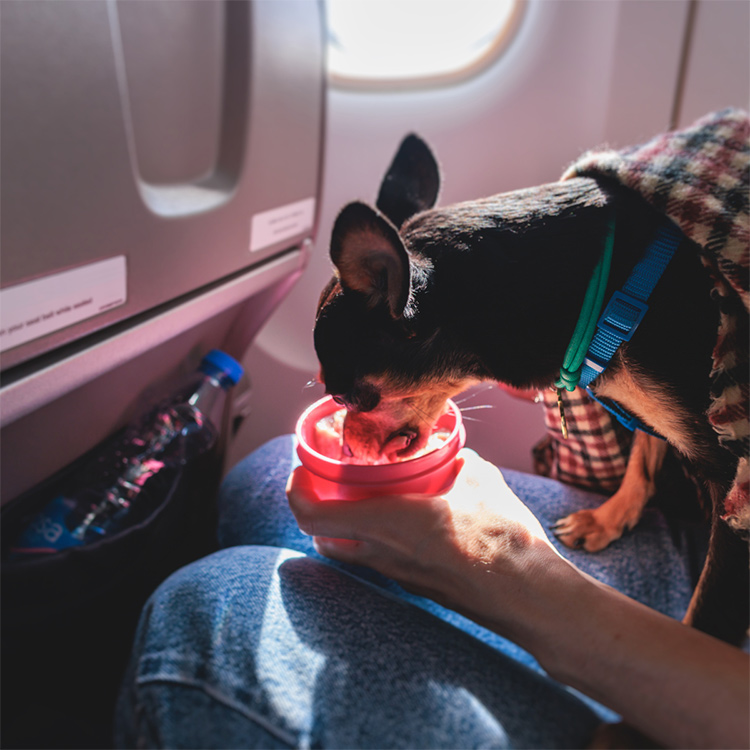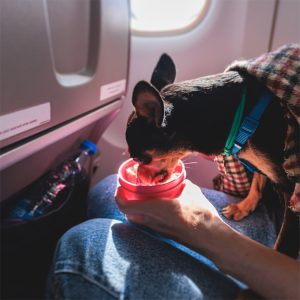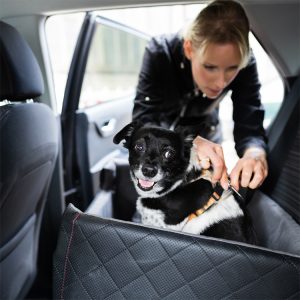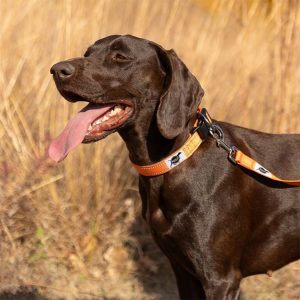Paws & Passports: Travel Tips for Dog Owners

The winter season is a very popular time for people to travel, especially for those seeking warmer climates. Sometimes, their dogs get to go on vacation with their owners. There are many things to remember when traveling with your dog, as well as many important tasks that some may not know are necessary when traveling with a dog. Additionally, it is important to remember that regulations are different for service animals compared to regular pets; just because a service dog is welcome somewhere does not mean your dog is.
Where to Stay
When finding a place to stay, you will obviously need to find pet-friendly lodging. However, some pet-friendly locations have breed or weight requirements; certain locations may allow a 5 pound chihuahua, but not an 80 pound lab. Make sure your specific dog is allowed at the chosen location. It may also be worthwhile to check out home rentals instead of hotels. Many whole-home rentals, such as VRBOs and AirBNBs, have a yard included, which may be more convenient than a hotel for your dog’s bathroom and exercise needs.
 Flights
Flights
Flying with dogs can get complicated quickly. If you are unsure about the rules for bringing your dog, contact your airline first as each airline has their own regulations. Most require your pets to be included on your ticket. Most of the time smaller dogs can travel with you in the cabin as long as their carrier fits under the seat in front of you but note that this may count as your carry-on item. Larger dogs often have to travel in the cargo section of the plane. Make sure they have an appropriate crate for travel and do not exceed the weight requirements. Dogs traveling in cargo are also not able to be reached during the flight, so make sure the flight is not too long for them to go without food, water, and medications. Some airlines require that dogs are a certain age before traveling, often over 8 or 16 weeks for domestic and international flights, respectively. Make sure your dog has plenty of chances to go to the bathroom prior to the flight; most airports have pet relief areas. Also limit your dog’s food and water intake a couple hours before a flight to help prevent accidents, but still give enough water to avoid dehydration. If you are not comfortable bringing your dog with you on a flight, you can hire a pet transport company. These companies can either drive your dog to your destination or have an experienced individual accompany them on a flight.
 Road Trips
Road Trips
Car travel with dogs may be easier than a flight, but there are still a few things you should remember. First, make sure they have a secure place to ride in the car. If you were to get into an accident, think about places that wouldn’t be safe for your dog: riding in your lap, running around on the floor, or sitting on the seat with no restraint. One of the best places for your dog during car rides is in a crate. Many companies make crates or carriers that are very durable and more protective of your dog during a crash compared to a flimsy fabric one. However, if your dog is most comfortable not in a crate or carrier, you can purchase harnesses or clips that connect to seat belts. This way, your dog is still restrained in the case of an accident, but has more freedom to move and stretch. Another thing to remember is stopping often for bathroom breaks. Anytime you stop to go, let your dog out too. Just like a flight, you can limit their food and water intake prior to the road trip, but they should still be drinking a little water. When letting your dog out, you should also play with them for a bit. This will help get a little energy out and prevent your dog from getting bored and nervous during the car ride. Some dogs get overly anxious or car sick. Talk to your vet about various options to help prevent and treat these symptoms in your dog; medication may be your best option. These can be used for flights, too.
 Health Certificates
Health Certificates
Depending on where you are travelling or your method of travel, your dog may need a travel health certificate. Health certificates certify that your dog is in good health and is up to date on the pet travel requirements of the destination (often regarding vaccines). Most domestic flights do not require health certificates for dogs, but make sure to double check before you go. When getting a health certificate for your dog, you will need to bring your dog to the vet for an examination. Depending on the destination, your dog may need a rabies vaccine booster or titer test (a test that checks levels of antibodies) and a microchip. Some destinations require that your dog is examined within a certain time frame of departure, as well as ensuring a rabies vaccine is given after a microchip is implanted. Make sure you have your dates of travel (both departure and return), address of your destination, and companies you are traveling with, such as the airline, as this will all be included on the certificate. Islands are generally the strictest when it comes to health certificate requirements as many have eradicated rabies and want to ensure no incoming animals have the potential to reintroduce it. If you are planning to travel to one, make sure you look up the requirements far in advance as you and your vet clinic may need extra time to ensure the requirements are met.
Emergency Clinics
Before traveling, look up emergency vet clinics in the areas surrounding your destination. If you are not sure of how to find an emergency clinic, you can call a regular clinic in the area and ask if they have a list. It is important to note that not all vet clinics are emergency clinics, so make sure the ones you find are equipped to handle same day emergencies.
 Identification
Identification
Your dog should always be wearing a collar with an identification tag, but this is extremely important while on vacation. If your dog gets lost, they won’t be able to recognize smells or locations like they would at home, which makes it very difficult for them to find their way back to you. Make sure their collar is fitted properly so it doesn’t come off. Also make sure the tags on the collar are secure; tags that are dangling too much or are loosely attached can easily get caught on something and rip off. If your dog is microchipped, make sure the microchip is registered, and your information is up to date. Many vet clinics, animal shelters, or local law enforcement stations have microchip readers and can help track you down if your dog is brought in.
The American Kennel Club has an article dedicated to tips for traveling with your dogs. Find it here: AKC: Travel Tips
The Animal and Plant Health Inspection Service (a branch of the USDA) has a page detailing the pet travel requirements in various countries. See it here: APHIS: Travel Requirements
We hope you have fun and safe travels with your dogs!






































































